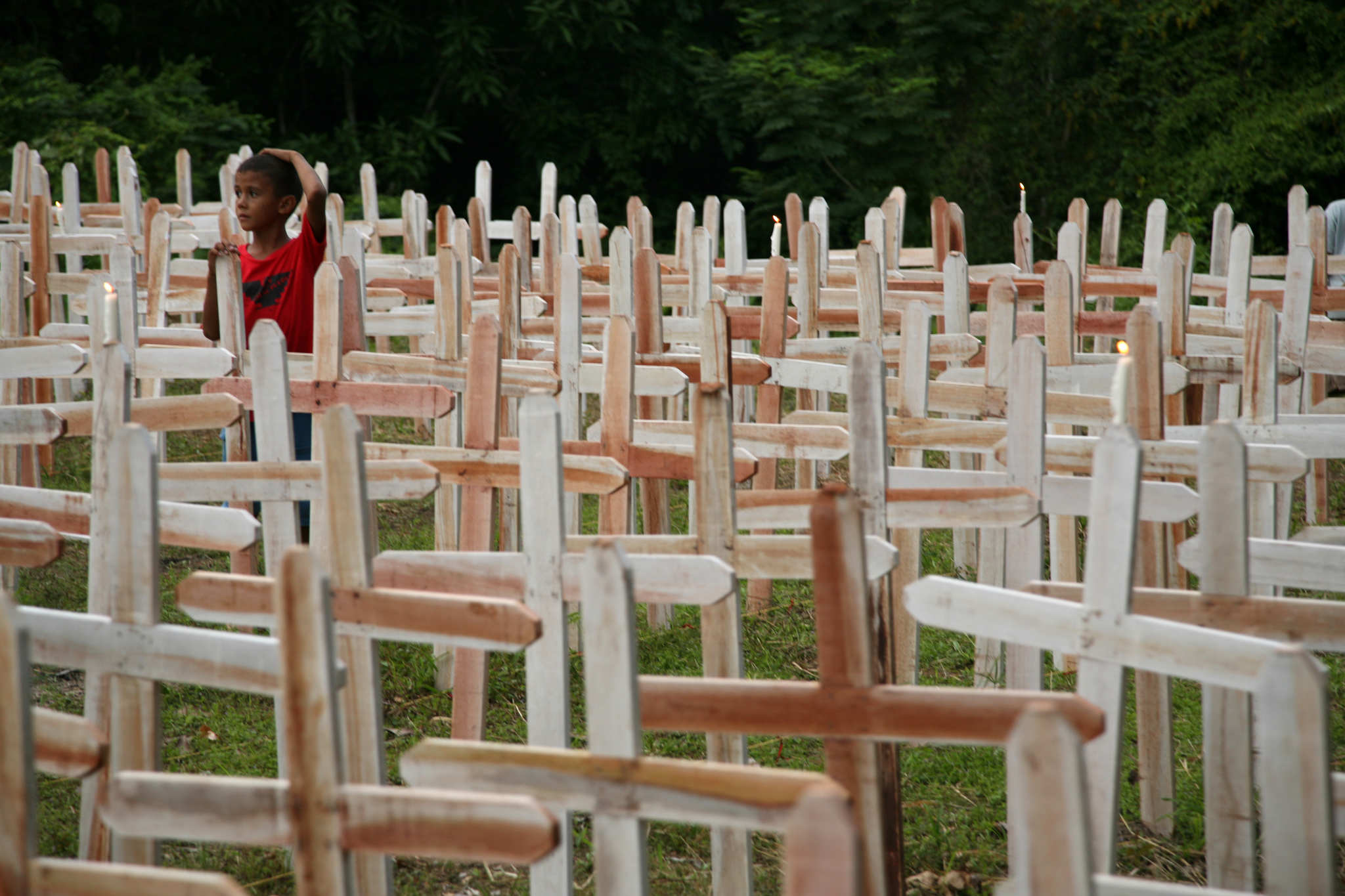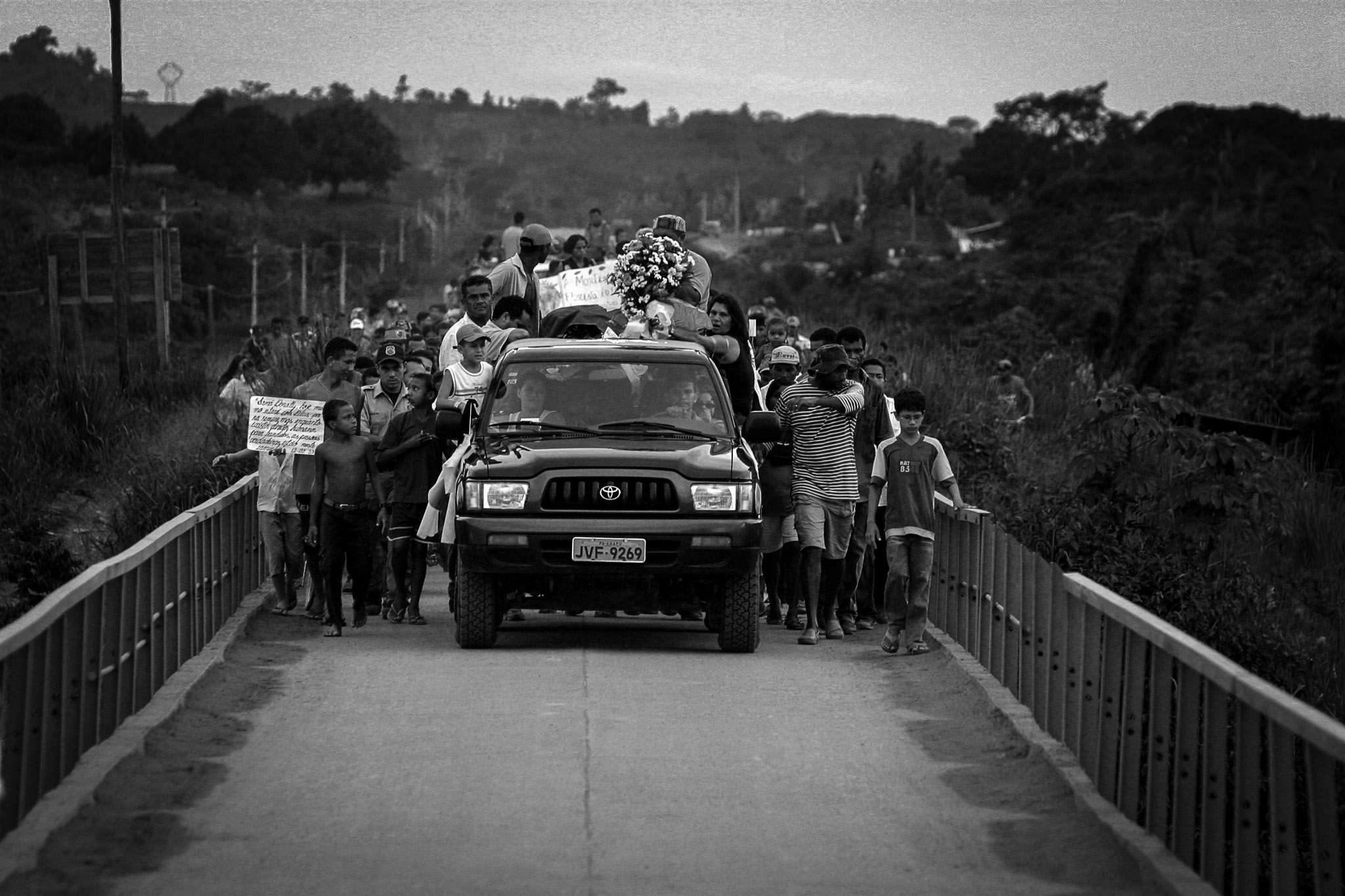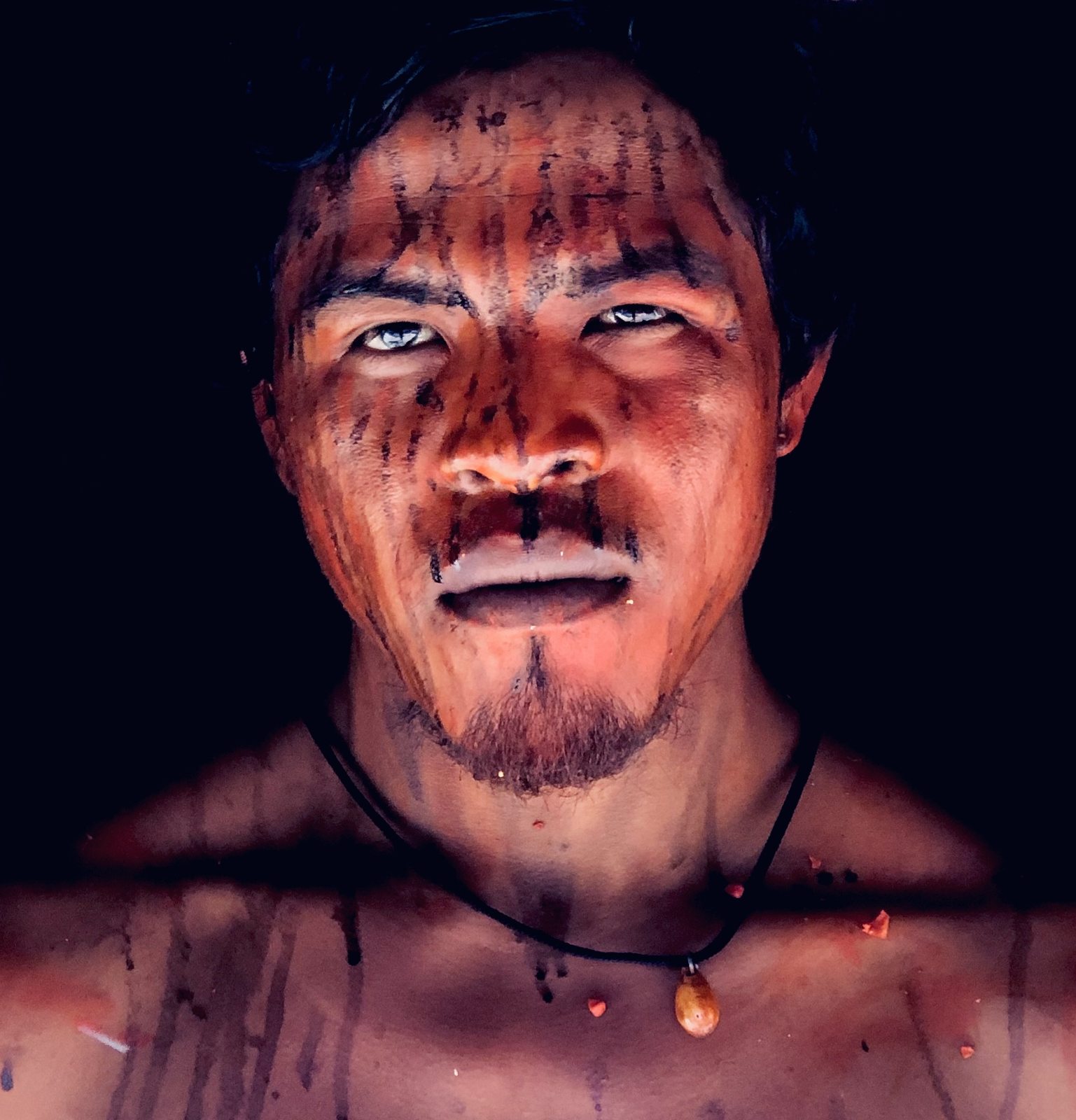WHEN JAIR BOLSONARO took office as president of Brazil at the start of 2019, he ushered in a climate of hostility toward rural activists — Indigenous peoples, environmentalists, advocates for landless workers’ rights, and communities subsisting off the sustainable extraction of forest resources. In that first year, 31 people were killed in the wave of rural violence that swept Brazil. They have first names, surnames and histories of defending their land. What they do not have is justice.
In the more than one year since their deaths, no one has been convicted, and only one case is considered closed: that of an Indigenous person in the state of Amapá who, according to the Federal Prosecution Service, drowned — a version disputed by the family, citing injuries found on the victim’s body.
Another 19 investigations (61%) have still not been concluded, and one of the cases is still with the Prosecution Service. Police investigations into 10 cases (32%) have been completed and are awaiting trial, and six cases center on a single incident: the Baião massacre in the state of Pará. In only seven of the murders there has been pre-trial detention of suspects — mostly farmers and security guards — but in four cases, the suspects have been released.
The numbers are part of a Repórter Brasil survey based on a report by the Catholic Church-affiliated Pastoral Land Commission (CPT), compiled in a special multimedia report, “Measured Grave,” which provides an unprecedented view into the violence — and impunity — in rural Brazil.
“Impunity is a structural arrangement in which victims of violence maintain their historical condition of invisibility, even when they are eliminated,” says Paulo César Moreira, coordinator of the CPT, which has been releasing annual reports on rural conflicts for more than three decades.

This invisibility refers to the victims’ profiles. Those killed in 2019 were mostly men (93%) who lived in the states that make up the “Legal Amazon” region (87%), were linked to landless workers’ (35%) or Indigenous people’s movements, and who died defending their territories (25%). They were poor workers who often lived under threat and dreamed of a piece of land on which to make a living — a right guaranteed in Brazil’s Constitution. The victims include an employee of Funai, the federal agency for Indigenous affairs.
The “Measured Grave” report also shows that most cases involved disputes over land (39%) or the defense of Indigenous territories (29%). But there were also labor issues and even a hate crime, in which an elderly person was run over during a protest by the Landless Rural Workers’ Movement (MST) in Valinhos, in São Paulo state.
The brutality of some of the murders indicates hatred and prejudice against rural peoples. In addition to the MST activist who was run over, environmentalist Rosane Silveira, from Nova Viçosa in Bahia state, was found dead with her feet and hands tied, stabbed and shot in the head, with signs of strangulation.
The suspects, people of interest to the police and those charged by the Prosecution Service include farmers, private security guards hired by landowners, hunters, as well as loggers and land grabbers. But there are cases in which investigators have turned up no clues, and situations where the police structure is poor — such as a murder in southern Amazonas state in which no police report was ever filed, and another one in the state of Mato Grosso, where the police station that was supposed to investigate a death did not even have a commanding officer.
Under Brazil’s Code of Criminal Procedures, a police investigation must be concluded in 30 days. But this rarely happens in homicide cases, whether rural or urban. “Research on homicides in Brazil and in the world shows that, when cases are solved, it usually happens within a year,” says Bruno Langeani, a lawyer and manager of the Sou da Paz Institute, which advocates for peace in society.
“Over the months, the chances [of solving a case] drop because time erases the traces, pressure on the authorities decreases, and witnesses forget details,” Langeani says.
In practice, that translates into 61% of cases under police investigation possibly never reaching the courts. And for those that do, the trial can drag on for more than 10 years.
Amid police institutions’ lack of structure and the slowness of the judiciary, impunity has long been a common problem. Of the 1,496 cases of rural violence between 1985 and 2018, only 120 (or 8%) went to trial, according to a CPT survey. Investigative outfit Repórter Brasil also investigated five murders that took place more than a decade ago to understand whether the time factor contributes to justice: only one of them went to trial, with the perpetrator eventually convicted and jailed.
In addition to silencing lives and struggles, violence also undermines investigations.
“With so many killings, getting witnesses is difficult,” says Nayara Santos Negrão, a prosecutor for agrarian crimes in Altamira, Pará state. “People don’t want to put themselves at risk and this ends up complicating the investigation.”
Edson Guerra, the agrarian crimes prosecutor in Pernambuco state, agrees, adding that some crimes leave no trace.
“Nobody wanted to speak because they were afraid,” he told Repórter Brasil about one of the killings documented in the “Measured Grave” report. “It was a planned, well-designed thing, because I had no evidence.”

Police officers in charge of investigations, however, often cite confidentiality or give vague answers to explain away the lack of progress in investigations. “There are still procedures under way that will help to complete the investigation,” one of them said for the “Measured Grave” report. “The investigation is under way,” another said.
The families, meanwhile, grieve for their dead, sometimes under threat, sometimes facing economic hardship.
“We live in anguish; we have no peace in this situation,” says Elizangela Raimunda da Silva Santos, the widow of Aluciano, a man who was murdered in rural Pernambuco. “It’s a terrible injustice. Is it really going to be just like that? I stayed behind with my children, struggling.”
She is now being helped by the church to feed her three young children.
‘License to kill’
“What makes these people commit crimes is that impunity is almost certain,” says Marina Silva, Brazil’s former environment minister.
Silva was born in a rubber plantation in Acre state and has experienced rural violence up close, having lost her union activist associate, Chico Mendes, in 1988, in one of the highest-profile murders of an activist in Brazil. Silva, who founded the Rede Sustentabilidade (Sustainable Network) party, says the discourse and some of the measures adopted by Jair Bolsonaro, such as reducing environmental inspections, has led to an increase in the violence.
“Killers feel they have a license to kill. They listen to the government’s discourse against Indigenous people, environmentalists, extractivist populations, and they feel they’re covered while the victims are helpless and unprotected,” she says.
Indeed, the number of rural conflicts increased by 23% from 2018 to 2019, according to the CPT — a record in the last five years.
To reduce the violence, Silva says, the murderers must be investigated and punished, along with those who ordered the crimes. When Silva was in office, from 2003 to 2008, she held public selection processes to hire more employees for IBAMA, the federal environmental protection agency, and strengthen environmental inspection; she even authorized inspectors to burn machinery used in illegal mines. The Bolsonaro administration has reversed this policy.
“In many cases, it’s all you can do. By forbidding [burning machines] as Bolsonaro does, the government empowers those who are breaking the law,” Silva says.
Most of the deaths from rural violence in 2019 occurred in the state of Pará, accounting for 12 of the 31 victims. The same state was the site of two earlier massacres — the killing of 19 landless farmers in 1996 by the military police in Eldorado dos Carajás, and the Pau D’Arco incident in 2017, when police killed 10 landless activists — and the murder of Catholic nun and activist Dorothy Stang in 2005. Unlike the victims named in the “Measured Grave” report, the execution of U.S.-born Stang gained international prominence and the perpetrators were arrested following a long legal battle.
But the municipality of Anapu, where Stang used to advocate for land reform, continues to see blood spilled. In 2019, three people were murdered because of land disputes there: Márcio Rodrigues dos Reis, Paulo Anacleto, and Marciano dos Santos Fosaluza. Their names are written on a red cross next to Stang’s grave, together with those of 16 others — all murdered as a result of their fight for land reform in the just the past five years in the town near the Transamazônica Highway.
Silva was the environment minister when Stang was killed; she was with the federal police in Pará the day she died.

“I sent them to the crime scene, because I thought that, if that murder [investigation] remained in the hands of [state authorities], some maneuver would be attempted to protect the murderers,” she says. “When the police arrived at the crime scene, the military [state] police wanted to incriminate an ally of Stang’s. It’s a lawless land.”
Silva also recalls how, when Stang’s body arrived in Anapu, some people set off fireworks to celebrate her death.
Stang, like many of the victims featured in the “Measured Grave” report, struggled for the democratization of access to land in the country.
“Inequality in land distribution in Brazil is among the world’s highest, being associated with historical processes of land grabbing, social conflicts and environmental impacts,” says a study by Imaflora (the Institute of Forest and Agricultural Management and Certification).
The study found that 10% of the largest farms occupy 73% of Brazil’s agricultural land. One of the measures to reduce inequality, the study said, is land reform. But that process was suspended in 2019 by the Bolsonaro administration, Repórter Brasil showed at the time.
João Pedro Stédile, an economist and coordinator of the Landless Rural Workers’ Movement (MST), says there’s a pattern of the cruelty against rural workers, which has remained the same for decades.
“This violence is present in judicial persecution and police work, and it culminates in the murders,” he says.
It shows how the Brazilian state is elitist and biased, which guarantees repression of peasants and impunity for landowners, Stédile says.
“The Bolsonaro government, with its fascist rhetoric, induces even more impunity,” he adds.
The Secretariat of Land Affairs at the Ministry of Agriculture did not answer the questions submitted for this article. Secretary Nabhan Garcia declined to be interviewed.
Indigenous leaders targeted
After landless rural workers, Indigenous people were the main victims of rural brutality. In 2019, nine of them were murdered for defending indigenous territories, seven of whom were leaders of their respective communities. It was the highest number of murders of Indigenous leaders in the last 11 years, according to the CPT.
“The invaders felt totally authorized to be violent,” says Sônia Guajajara, executive coordinator of the Articulation of Indigenous Peoples of Brazil (Apib).
Guajajara says the current peak in violence against Indigenous peoples began when Bolsonaro declared he would not demarcate “even an inch” of Indigenous land, effectively refusing to recognize their customary land rights. The threat wasn’t mere rhetoric: in the two years of the administration, the government has not demarcated any new Indigenous territories, while pending requests for demarcation have largely stalled. Marcelo Xavier, the head of Funai, the Indigenous affairs agency, declined to be interviewed for this article; the agency did not answer questions submitted by reporters.

Among the murders of Indigenous people in 2019, the case of Paulo Paulino Guajajara has had the strongest repercussions. Paulino was a member of the Guardians of the Forest, a group formed by Indigenous people to protect their territory from loggers and encroachers.
“Their work is very risky because there’s no protection. [The Guardians] are doing the state’s work in protecting public lands,” says Sônia, a fellow member of the Guajajara peope. She adds that despite the risk, the group’s work is important: “They are significantly reducing the number of loggers that enter the territory.”
A year after Paulino’s murder, which drew international condemnation, his family continues to face economic hardship and threats.
“The whole world heard about my son’s death and the criminals are angry with me,” says his father, José Maria Guajajara. “I get threats but I’m not afraid. I just miss him so much.”
The two loggers indicted in Paulino’s murder remain at large despite being ordered to pretrial detention. After Paulino’s death, four other Indigenous people were killed in the same region.
For these slain activists and the families and communities they leave behind, the battle against impunity takes as much of a toll as the fight to defend the land or gain access to it.
“The struggle to punish the perpetrators has not been very successful,” says the CPT’s Moreira.
This article was originally published in Portuguese in Repórter Brasil and is part of the special report “Measured Grave,” which provides an unprecedented exposé of rural violence and the impunity that prevails over the murders of 31 landless workers, Indigenous people and environmentalists in the first year of the Bolsonaro administration.
*Additional reporting by: Mariana Della Barba, Diego Junqueira, Daniela Penha, Gisele Lobato, Maria Fernanda Ribeiro, Joana Suarez and Pedro Sibahi


